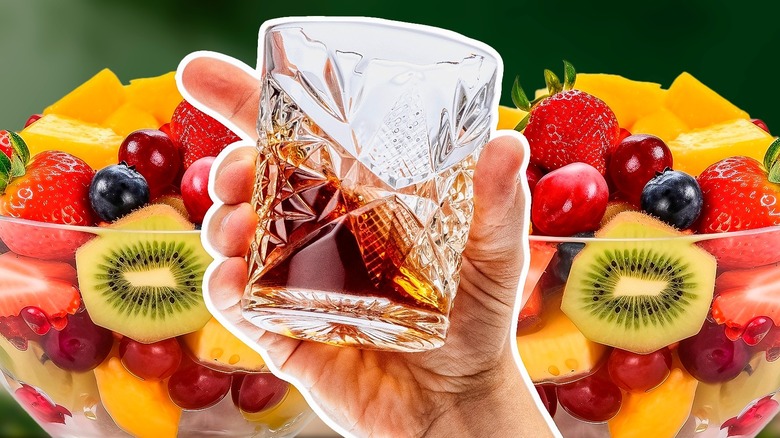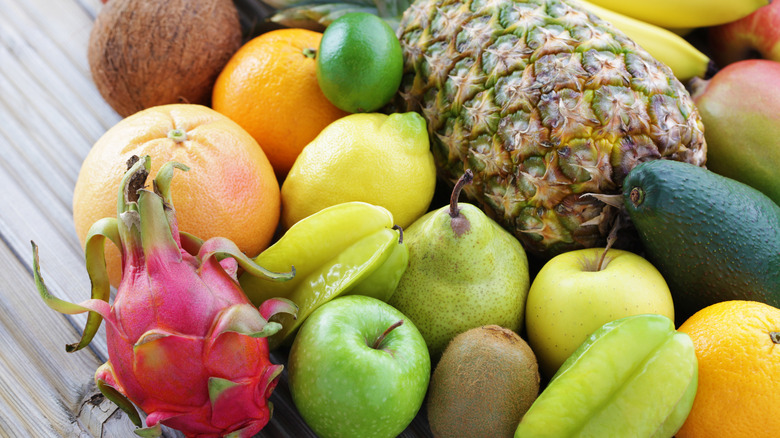A Certified Taster Explains How Fruits Are The Key For Developing Your Whiskey Palate
Learning how to properly taste whiskey can be a long journey that requires brushing up on everything from the production methods of the spirit to the differences between the many types of whiskey available around the world. One component of preparing your palate that you may not expect, however, is familiarizing yourself with fruits. Tasting Table spoke with Mandy Naglich, Certified Taster and author of "How to Taste: A Guide to Discovering Flavor and Savoring Life," who explained why exactly this is the case.
Whiskey has a wide variety of tasting notes, including many that lean sweet and fruity. Being able to pick out these notes from the overall profile of a complex spirit takes some training. "When it comes to developing your palate, it is all about practicing over and over again," said Naglich. In order to recognize all the subtle fruit flavors in whiskey, you must first be very knowledgeable about the characteristics of these fruits on their own. According to the beverage journalist, this doesn't just mean their taste but also their smell. Naglich added, "About 80% of what we consider 'flavor' comes from aroma." That means dedicating time to eating and sniffing a long list of produce before you even pour a glass of whiskey.
Pick fruits found in tasting notes
When shopping for fruit with which to strengthen your whiskey palate, be sure to aim for those commonly found in the spirit. These include options ranging from oranges and apples to coconuts and figs. Naglich also recommends buying multiple varieties of the same fruit — such as orange and green honeydew melon — and fruit in different formats. "Try tasting coconut fresh, dried, sweetened, unsweetened, toasted, as coconut water, in coconut ice cream," she explained. This will help you learn the broader nuances of each flavor so that you can quickly identify them when sipping your spirit.
While tasting and smelling each fruit, pay attention not only to the overall flavor of the fruit but also its own tasting notes. Naglich suggests asking yourself, "Does one smell more buttery? More woody? More like vanilla? More like grass?" By separating these components, your palate will be more likely to catch them when drinking whiskey, making you a more well-rounded and sophisticated taster.

